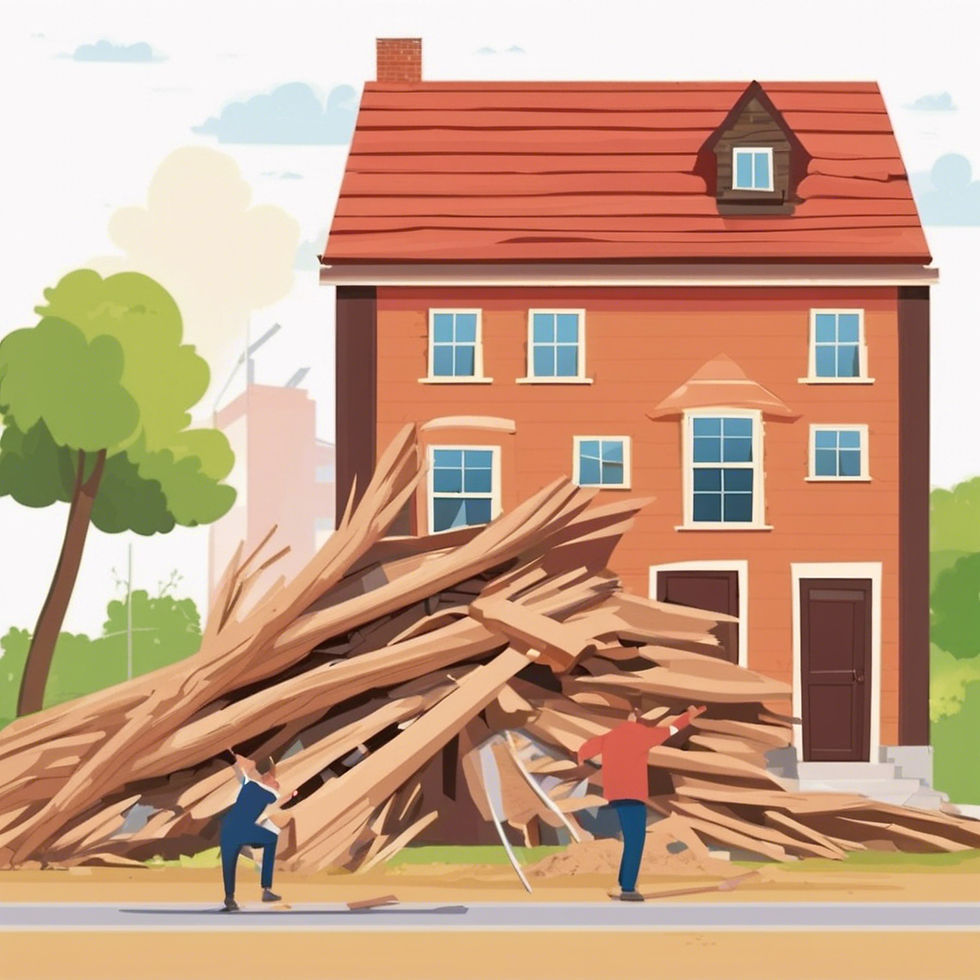Common Mistakes to Avoid in Renovation & Knockdown Rebuild Projects
- Trent Alexander
- Aug 21, 2024
- 3 min read

Undertaking a knockdown rebuild project can be an exciting venture, offering the opportunity to create a home that perfectly suits your needs while retaining the charm of your location. However, without careful planning, it's easy to make mistakes that can cost you time, money, and even reduce the value of your property. Here are some of the most common pitfalls to avoid:
1. Disregarding Heritage Elements
When renovating an older home, it's crucial to respect the heritage features that add character and value. Overlooking elements like ceiling roses, fireplaces, cornices, and mantelpieces can strip the home of its original charm. Preserving these features, or thoughtfully integrating them into your new design, can enhance the appeal and market value of your property.
2. Failing to Modernize Fully
A common mistake in knockdown rebuilds is modernizing the main structure but leaving dated additions untouched. These remnants of past renovations can detract from the overall aesthetic and diminish the home's value. It's essential to create a cohesive design that eliminates outdated elements and ensures a seamless blend of old and new.
3. Cutting Corners in Rental Properties
If you're renovating with the intention of renting out the property, it might be tempting to cut corners to save money. However, this approach can backfire, leading to poor-quality finishes that not only fail to add value but could also result in higher maintenance costs down the line. Invest in quality materials and workmanship to ensure the property remains attractive to tenants and retains its value.
4. Over personalizing the Design
While it's important that your home reflects your tastes, going too far with personal design choices can limit the property's appeal to future buyers. Overly specific or unique décor might turn off potential buyers, making it harder to sell the property down the line. Aim for a balance between personal expression and broad market appeal.
5. Rebuilding Without Enhancing
Sometimes, a knockdown rebuild is chosen over a renovation, but simply replacing the existing property’s footprint can be a missed opportunity. By not improving upon the original layout or design, you risk losing the unique characteristics that made the home special in the first place. Additionally, newer designs may date faster than classic features, potentially decreasing the home's value over time.
6. Ignoring Site Conditions
Designing a new home without considering the specific conditions of your land is a critical mistake. Factors such as orientation, natural light, and access points should influence the design to maximize comfort and energy efficiency. A well-thought-out design that respects the site conditions will enhance the livability and sustainability of your home.
7. Overcapitalizing on Unnecessary Features
Spending too much on features that won't significantly boost your property's value is a common pitfall. While luxury finishes and high-end fixtures can be tempting, they may not always provide a good return on investment. It's important to carefully consider where to allocate your budget to ensure you're adding genuine value to your home.
8. Undercapitalizing in High-Expectation Areas
Conversely, undercapitalizing by opting for cheaper materials and finishes in a high-demand area can be equally detrimental. In locations where buyers expect a certain level of specification, skimping on quality can result in a property that doesn't meet market expectations, making it harder to sell and reducing its overall value.
A knockdown rebuild can be a rewarding project, but it requires careful planning and consideration of various factors to avoid costly mistakes. By being mindful of these common pitfalls, you can ensure that your new home is not only beautiful and functional but also retains or increases its market value.
For a deeper dive into these topics, check out the latest episode of The Property Files, where we explore knockdown rebuild mistakes in detail and offer expert advice on how to avoid them.






Comments